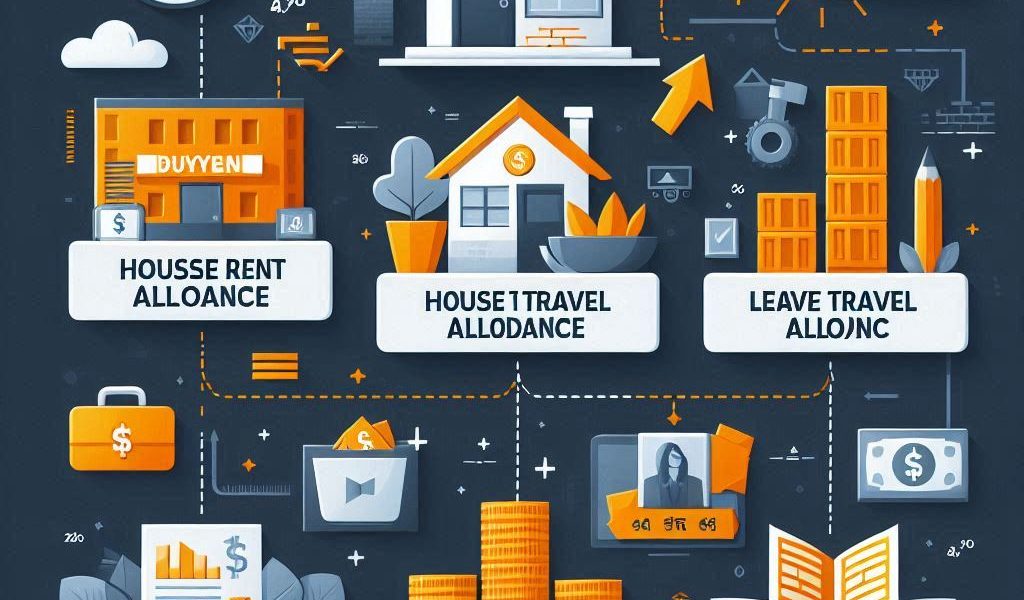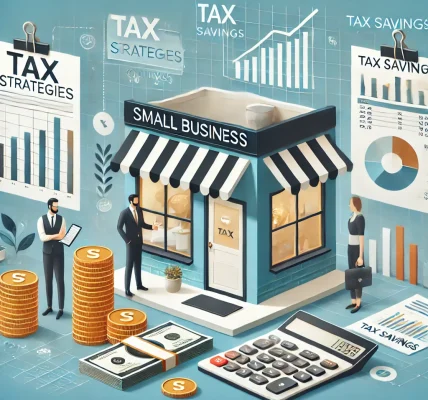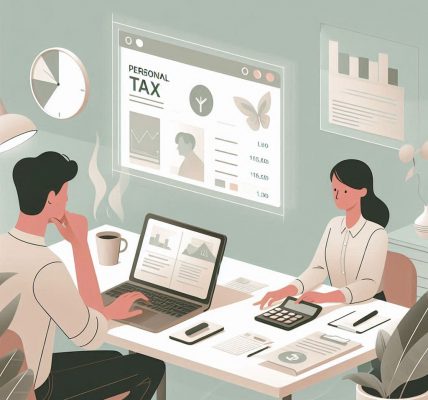Introduction
Maximizing tax benefits is an essential aspect of salary planning. Employers provide various salary components such as House Rent Allowance (HRA), Leave Travel Allowance (LTA), and other perks that can help employees legally reduce their taxable income. Understanding how these salary components work and how to utilize them efficiently can help salaried individuals optimize their tax outgo.
In this guide, we will break down the most critical salary components, tax benefits associated with them, and best practices for tax savings in compliance with legal provisions.
1. Understanding House Rent Allowance (HRA)
What is HRA?
House Rent Allowance (HRA) is a component of a salaried employee’s compensation that helps them meet rental expenses. It is partially or fully exempt from tax under Section 10(13A) of the Income Tax Act.
HRA Tax Exemption Calculation
The HRA exemption is calculated as the least of the following:
- Actual HRA received from the employer.
- 50% of basic salary (for those living in metro cities like Delhi, Mumbai, Chennai, Kolkata) or 40% for non-metro cities.
- Actual rent paid minus 10% of basic salary.
Who Can Claim HRA Exemption?
- Employees who receive HRA as part of their salary.
- Employees who live in rented accommodation and have rent receipts as proof.
- Self-employed individuals cannot claim HRA but can use Section 80GG to avail tax benefits.
Important Notes:
- If rent paid exceeds ₹50,000 per month, PAN details of the landlord must be submitted.
- Employees can claim HRA benefits even if they are paying rent to parents (with valid rent agreements and bank transfers as proof).
- If HRA is not included in salary, Section 80GG can be used for deductions.
2. Understanding Leave Travel Allowance (LTA)
What is LTA?
Leave Travel Allowance (LTA) is a salary component that covers travel expenses for employees when they take a leave to travel within India. LTA is tax-exempt under Section 10(5) of the Income Tax Act.
Conditions for LTA Exemption:
- Only domestic travel is covered – International travel is not eligible.
- Only actual travel costs are covered – Airfare, train, or bus tickets. Hotel stays, food, and local transport are not included.
- LTA can be claimed for family members, including spouse, children, and dependent parents/siblings.
- LTA can be claimed twice in a block of four years (current block: 2022-2025).
How to Claim LTA?
- Submit travel tickets and receipts to your employer.
- Ensure the travel is done within the eligible block year.
- Unclaimed LTA cannot be carried forward but can be compensated with an LTA Cash Voucher Scheme (if applicable).
3. Other Tax-Saving Salary Components
1. Standard Deduction
- A flat deduction of ₹50,000 is available for all salaried employees.
2. Performance-Based Incentives & Bonus
- Bonuses and incentives are fully taxable, but they can be structured in a tax-efficient manner.
3. Food Coupons / Meal Allowance
- Non-taxable up to ₹50 per meal, amounting to approximately ₹26,400 per year.
4. Employee Provident Fund (EPF)
- Employer’s contribution to EPF (12% of salary) is tax-free.
- Employee’s contribution qualifies for deduction under Section 80C (₹1.5 lakh limit).
5. Professional Development Allowance
- Employers may provide tax-free reimbursements for skill enhancement courses.
6. Mobile & Internet Bill Reimbursement
- If used for work purposes, these expenses can be reimbursed tax-free.
7. Gratuity
- Tax-free up to ₹20 lakh if an employee completes 5+ years of service with an employer.
4. Best Practices for Maximizing Tax Benefits
✅ Opt for HRA and Provide Valid Rent Receipts
- Ensure you keep valid rent receipts and lease agreements.
- If living with parents, pay rent via bank transfer and maintain proof.
✅ Claim LTA for Family Vacations in India
- Plan trips within India and keep travel tickets.
- Ensure the travel happens within the block year.
✅ Utilize Section 80C & 80D for Additional Savings
- Invest in PPF, ELSS, NPS, or 5-year FDs to claim ₹1.5 lakh deductions.
- Claim medical insurance premium deductions under Section 80D.
✅ Leverage Tax-Free Perks
- Structure salary to include food coupons, travel reimbursements, and mobile bill reimbursements.
✅ Plan Bonus Payouts Wisely
- Ask your employer to distribute bonuses across financial years to avoid higher tax slabs.
Conclusion
Understanding and optimizing salary components like HRA, LTA, and other allowances can significantly reduce tax liability for salaried employees. By leveraging available exemptions and structuring your salary smartly, you can legally maximize savings and retain more income.
Key Takeaways:
✅ Claim HRA exemption if living in rented accommodation. ✅ Utilize LTA to save tax on travel expenses within India. ✅ Use tax-free components like food coupons, internet reimbursements, and EPF. ✅ Invest in tax-saving instruments under Section 80C & 80D. ✅ Plan salary components and tax-saving investments at the beginning of the financial year.




